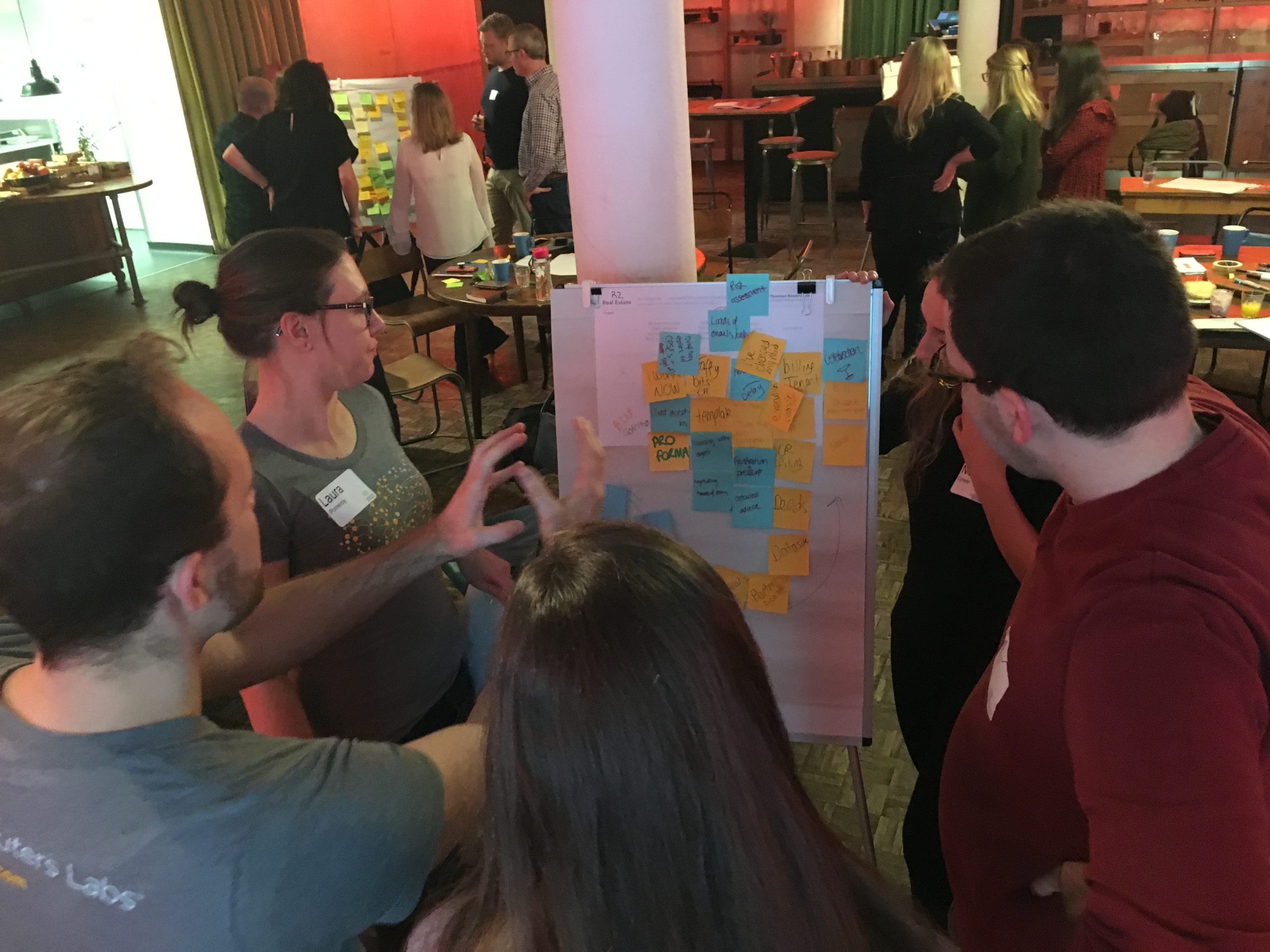Falling in Love with the Problem, BCLP Encourages its Associates to Think Differently

Falling in Love with the Problem, BCLP Encourages its Associates to Think Differently
By Nick Pryor & Andrew Fletcher
How can we create an environment that nudges legal professionals out of their day-to-day and beyond their comfort zone when rethinking their work?
At BCLP’s (Bryan Cave Leighton Paisner) 2019 Business Academy, an award-winning technology and innovation programme, Thomson Reuters Labs was invited in to help the participants think differently through a design thinking workshop; getting to know and love their clients’ problems; and imagining solutions through a balanced application of technology, people, and process.
Hosted by BCLP’s Chief Innovation Officer Katie DeBord, a session on the first day set the scene for the Design Thinking workshop giving attendees insights into the broader perspectives of an in-house lawyer, and the ways in which their requirements and expectations for their external counsel are expanding, in part as a result of the proliferation of data. Attendees were invited to reflect on those workstreams within their own expertise that might be most receptive to redesign or which could be most heavily impacted through application of technology.
Design Thinking is all about “falling in love” with the problem. Empathising with the people involved, focusing on pain points and finding ways to alleviate those pain points. In the Thomson Reuters Labs-run workshop, attendees were equipped with the tools to think differently. They went through a structured method to map out current processes in Real Estate, Litigation, and Due Diligence, thought through from both the client and internal BCLP perspective. Pain points were identified, prioritised and an exercise conducted to empathise with those involved, capturing a variety of ideas to potentially improve the entire experience.
Each team focused on one idea that they developed and presented. The ideas focused on meeting the needs of their clients, re-thinking the current realities of how to get things done in their firm, and delivering a better experience. Design Thinking is hard work and forces one to operate under time constraints, focus on the most important details and make choices about where to make a difference.
How might you apply Design Thinking to your problems? Well, to use BCLP associates as an example, they are encouraged to apply themselves to their own innovation projects in partnership with their newly formed BCLP Cubed initiative which explores new delivery models for legal services. The Design Thinking workshop is not the end goal, but the first step in a process to bring value to clients. For those thinking of applying Design Thinking to their work, here are some suggestions to think about:
- “Fall in love” with the problem, not the solution. Spend time getting to know and understand the problem, its context and the people involved. Empathise with them. Don’t jump to a solution but open up to new ideas by first understanding the problem you are trying to solve.
- Define and reframe. After understanding the problem, use structured techniques to look at that problem in different ways, prioritize which pain point to solve for and ideate around how to approach that situation differently.
- Prototype and test. Turn the ideas into something tangible. Quickly. And then test those ideas to improve them.
- Flair, and focus. Use approaches in Design Thinking to rapidly expand the understanding of the problem and number of potential solutions. But then bring focus on the thing to change and the way to change it. Finally, bring the ideas to an action point or a small number of action points that can be used to move forward. Remember, success comes from what happens next, not what just happened.
Nick Pryor is director of Innovation Solutions (EMEA), BCLP.
Andrew Fletcher is director of Thomson Reuters Labs – London